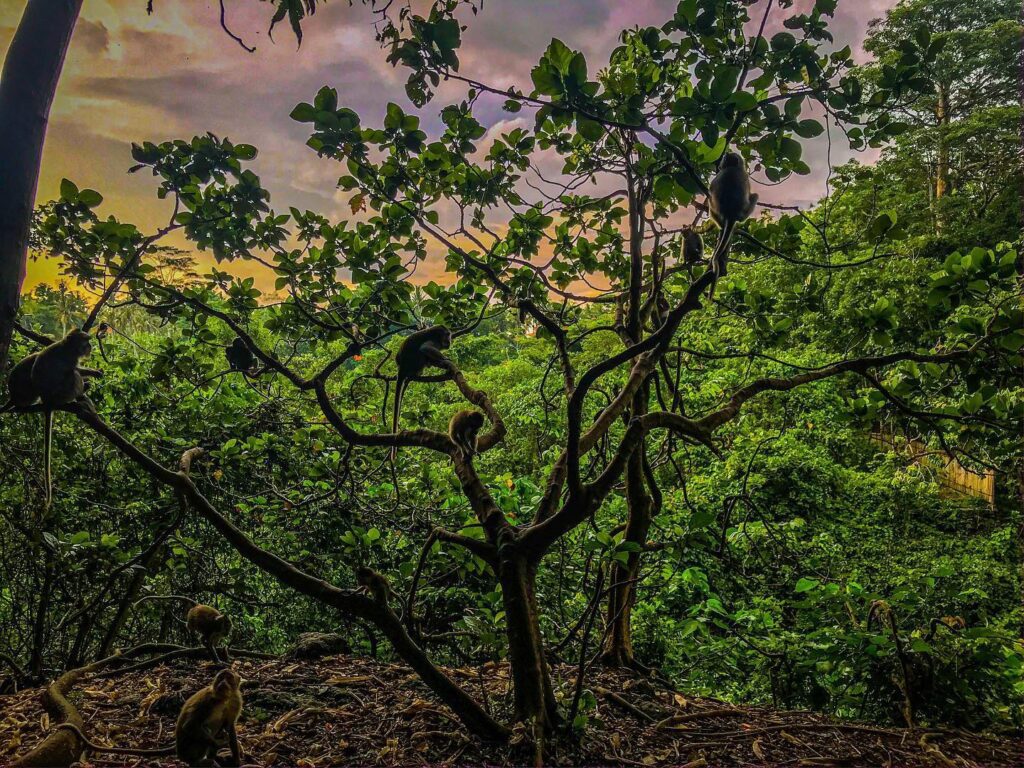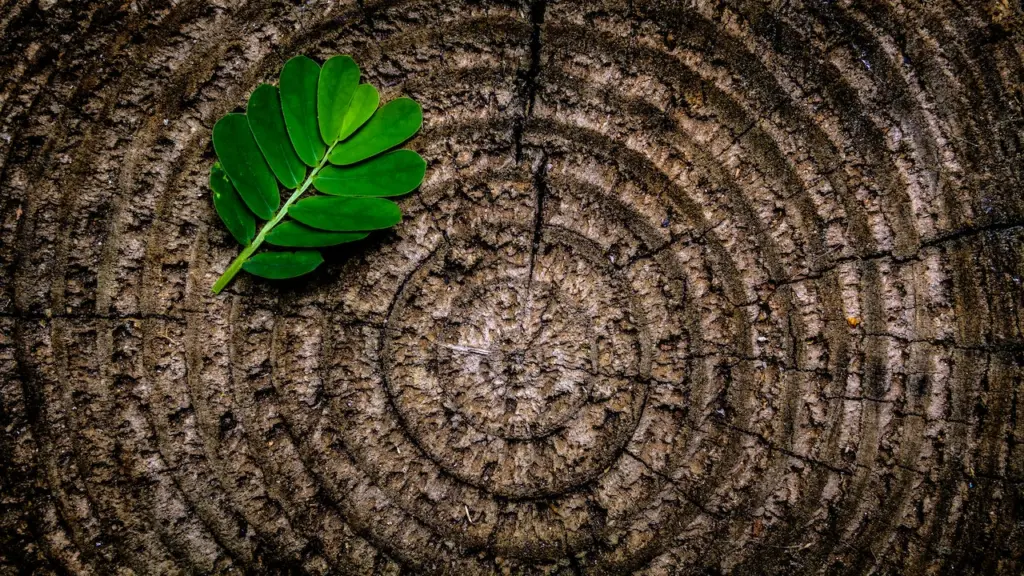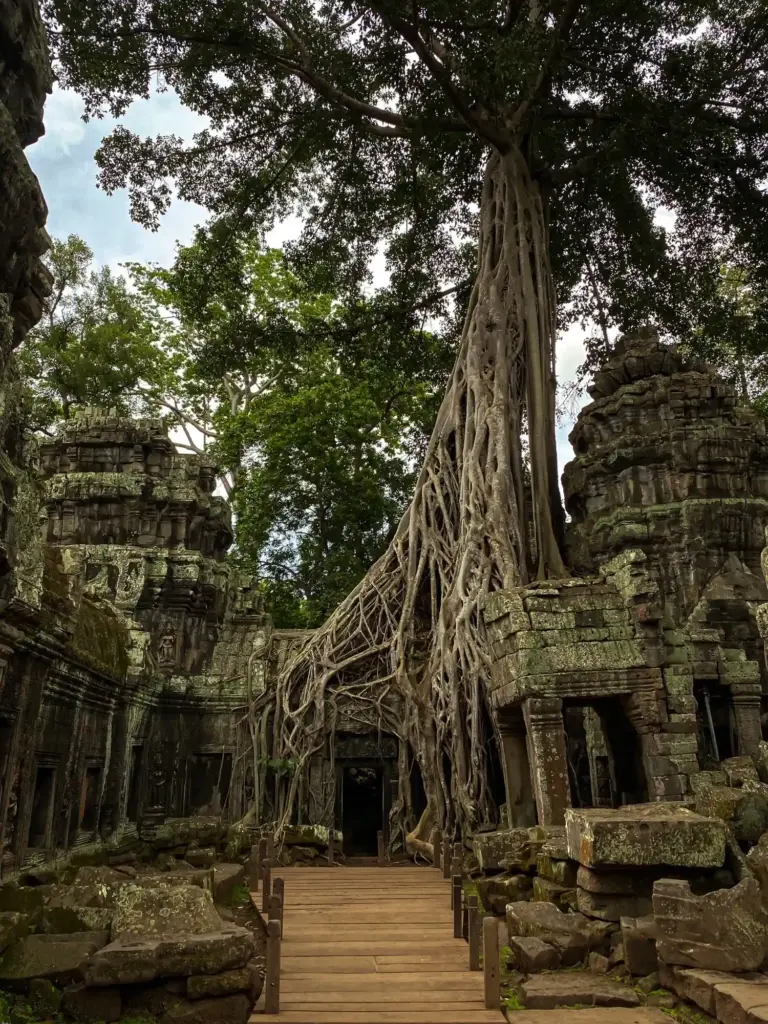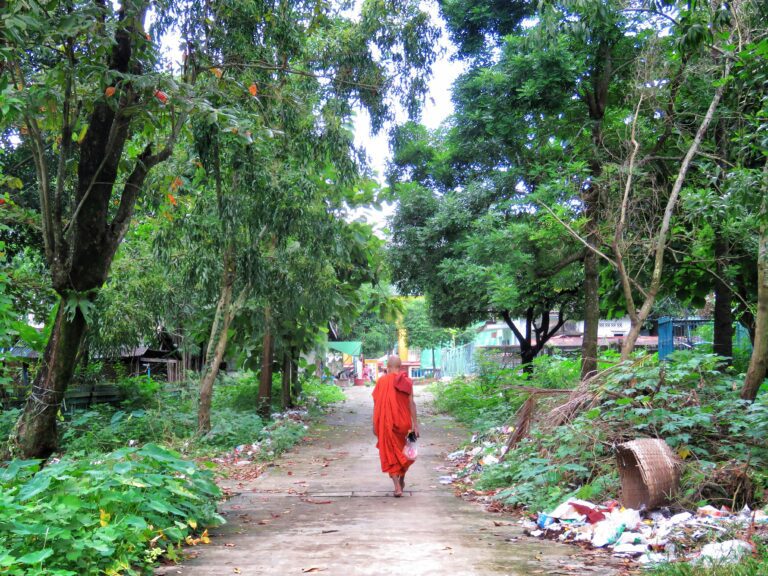Shinrin-Yoku, or Forest Bathing, is a practice that beckons us back to the serene embrace of nature. This term is not just about taking a walk among trees.
It’s an immersive journey, engaging all five senses. Listening to the rustle of leaves, inhaling the earthy scent of the soil, admiring the myriad shades of green, feeling the gentle touch of moss under your fingertips, and tasting the freshness of the air. This is Forest Bathing, this is Shinrin-Yoku.
The roots of Shinrin-Yoku trace back to Japan in the 1980s. It was born out of a necessity to combat the stress and strains of city life. Recognizing the healing power of nature, the Japanese government introduced this concept as a part of its national health program.
It’s based on the understanding that spending time in nature can have profound effects on our physical and mental well-being. And this is very much scientifically supported!
This practice is a bridge reconnecting us with the natural world, a relationship that often gets lost in the maze of urban living.
Table of Contents
Toggle
What is Shinrin-Yoku?
Forest Bathing is an intentional practice of connecting with nature for therapeutic purposes. Unlike a regular hike, Forest Bathing doesn’t emphasize physical exercise or the destination. Instead, it’s about slowing down and allowing the natural world to wrap around you.
In fact, you’re encouraged to meander aimlessly, taking in the sights, sounds, and smells of the forest. The key is to be present in the moment, to observe and listen to the subtle nuances of the natural environment. It’s about breathing deeply, acknowledging the beauty that surrounds you, and allowing the stress to melt away.
Forest Bathing is quite meditative. In Japan, Forest Bathing is intertwined with the ancient Shinto and Buddhist belief that natural elements like trees, rocks, and streams possess a spiritual essence. This reverence for nature is a fundamental aspect of Japanese culture, where forests are often considered sacred spaces.
In this context, Forest Bathing is not only seen as a way to rejuvenate oneself but also as an act of returning to one’s roots, to the essence of being human in the vast, interconnected web of life.

The Science Behind Shinrin-Yoku
Forest Bathing, while traditionally steeped in spirituality, has garnered significant attention in the scientific community for its health benefits, a fact underscored by a range of studies that delve into its physiological and psychological effects.
One pivotal study conducted by the Nippon Medical School in Tokyo, spearheaded by Qing Li, a leading researcher in the field, highlights the impact of Forest Bathing on cortisol levels, a primary stress hormone. In this 2007 study, participants spent time in a forest setting, and their cortisol levels were measured before and after the experience. The results showed a marked decrease in cortisol, suggesting a significant reduction in stress.
Another critical aspect of research focuses on how nature affects the human brain. Researchers at Stanford University conducted a study, published in the Proceedings of the National Academy of Sciences in 2015, exploring how walking in nature can influence rumination, a known contributor to depression. Participants who walked in a natural setting showed reduced neural activity in the subgenual prefrontal cortex, an area of the brain associated with mental illness, compared to those who walked in an urban environment.
The physiological changes during Forest Bathing are also noteworthy. Studies from Japan and Korea have consistently found that Forest Bathing can lead to lower heart rates and blood pressure, which are key indicators of stress and cardiovascular health. These studies attribute these changes to various factors, including the calming effect of phytoncides, natural compounds released by trees.
Research published in the International Journal of Biometeorology in 2011 demonstrated these physiological effects, showing that Forest Bathing trips have a significant impact on reducing blood pressure and pulse rates.
9 Benefits of Forest Bathing

1. Lower Blood Pressure
When we immerse ourselves in a forest environment, the body undergoes a notable shift.
The tranquility helps reduce the production of stress hormones like cortisol and adrenaline, which are key contributors to high blood pressure. This natural setting allows the body to transition from the stress-induced “fight or flight” response to a more relaxed “rest and digest” state.
As a result, the heart rate slows, and blood vessels dilate, leading to a decrease in blood pressure.
As stated earlier, an essential factor in this process is the presence of phytoncides, organic compounds released by trees and plants. These natural oils have a surprising effect on human health.
Inhaling phytoncides during Forest Bathing has been linked to reduced cortisol levels and an increase in parasympathetic nerve activity, further aiding in lowering blood pressure.
Research published in journals like “Environmental Health and Preventive Medicine” has shown that participants on Forest Bathing trips exhibit significant drops in blood pressure compared to their urban counterparts.
2. Boosted Immune System
Phytoncides, which are part of a plant’s defense system against germs and insects, have a similar protective effect on human health. When we breathe in these compounds during a walk in the forest, they also stimulate our immune system.
Specifically, exposure to phytoncides increases the production and activity of natural killer (NK) cells, a type of white blood cell that helps in combating infections and in the immune system’s response to cancer.
A landmark study by the aforementioned Qing Li, demonstrated that participants who took part in a three-day forest trip had a significant increase in their NK cell activity, an effect that lasted for more than a month post-trip. Further research has confirmed these findings, showing that regular visits to forests can have a long-term positive impact on the immune system.

3. Stress Reduction
The stress-reducing benefits of Forest Bathing are perhaps its most universally acknowledged advantage. This practice provides a natural antidote to stress, leveraging the restorative qualities of the forest environment.
The scientific underpinning of this stress reduction is found in the physiological changes that occur during time spent in forests. When we’re surrounded by nature, our body’s stress response – characterized by the production of cortisol and activation of the sympathetic nervous system – diminishes.
Furthermore, the act of disconnecting from technology and the demands of daily life while engaging in Forest Bathing plays another big role in stress reduction. The tranquility of the forest allows us to break away from the constant stimuli of urban environments, offering a much-needed respite for overstimulated minds.
4. Decreased Anxiety and Depression
The calming effect of being in a forest environment is central to its impact on anxiety and depression. Natural settings are known for their restorative properties, offering a stark contrast to the overstimulating urban environments that often exacerbate anxiety.
The simplicity and stillness of the forest can help quiet the mind, providing a space for us to process our thoughts and emotions more calmly.
Research in the field of environmental psychology consistently shows that exposure to natural environments can significantly lower levels of anxiety. For instance, a study published in the “International Journal of Environmental Research and Public Health” found that participants who engaged in Forest Bathing exhibited lower anxiety levels compared to those in urban settings.
Similarly, the impact on depression is noteworthy. The sensory experience of being in a forest — the sights, sounds, and smells — can act as a form of natural therapy. This immersive experience stimulates the production of positive hormones such as serotonin and reduces the activity of the prefrontal cortex, the brain area often linked with depression due to its involvement in rumination and negative thinking.
Moreover, the physical activity, even if mild, associated with walking in a forest can further contribute to alleviating symptoms of depression. Exercise has long been recognized for its role in improving mood due to the production of endorphins, and when combined with the therapeutic effects of nature, it becomes even more potent.

5. Enhanced Mindfulness
In the heart of a forest, distractions of the outside world fade away, allowing ua to focus on the here and now.
Engaging in this mindful observation during Forest Bathing has profound psychological effects. It allows for a break from the constant stream of thoughts, many of which are often related to past worries or future anxieties.
Mindfulness cultivated through Forest Bathing can enhance sensory perception, making the experience deeply enriching. This heightened sensory awareness not only deepens the connection with nature but also reinforces neural pathways associated with attention and focus.
Over time, this can improve cognitive functions and concentration in daily life.
6. Increased Inner Peace
When we step into a forest, we enter a world markedly different from the chaos of urban life. The relaxation response we get from participating in such an activity is what helps us in cultivating a sense of inner peace, as it enables the mind and body to harmonize.
Forest Bathing allows for a unique form of escapism, a healthy retreat from the pressures and demands of daily life. In the midst of nature, we can temporarily disconnect from routine stressors and immerse in the simplicity of being.
This disconnection provides a valuable perspective shift, offering clarity and a sense of groundedness. Away from the distractions of the external world, we can further engage in introspection and self-reflection, processes that are often neglected in the hustle of everyday life.
Additionally, the awe and wonder that often accompany the observation of nature’s beauty can lead to feelings of gratitude and a greater appreciation for life which all lead to inner peace, right?

7. Deepened Connection with Nature
Perhaps the most obvious yet often overlooked aspect is that Forest Bathing profoundly deepens our connection with nature.
This enhanced connection with nature also fosters a sense of belonging and interdependence. In the forest, one can sense being part of a larger ecosystem, not as an observer but as an integral component of it. This realization can be incredibly grounding and humbling, offering a perspective that counters the often anthropocentric view of the world.
Forest Bathing also allows for the cultivation of ecological awareness. As individuals become more attuned to the nuances of the natural environment, they often develop a deeper concern for its well-being.
8. Better Creativity
Forest Bathing significantly enhances creativity, offering a natural and effective way to stimulate imaginative thinking. This benefit emerges from the unique way in which nature interacts with the human mind!
When immersed in the calm of a forest, the mind is relieved from the constant bombardment of information and stimuli typical of urban environments. This reduction in cognitive overload allows the brain to relax and wander, a state often associated with the emergence of creative ideas.
Nature’s inherent complexity and unpredictability can stimulate the brain in unique ways. The diversity of shapes, colors, sounds, and textures in a forest can encourage unconventional thinking and problem-solving.

9. Improved Sleep
Finally, Shinrin-Yoku has a notable impact on improving sleep quality! This improvement in sleep is a multifaceted benefit, stemming from both the direct and indirect effects of spending time in a forest environment.
The calming effect of being in nature is a primary factor that contributes to better sleep. Forest environments naturally promote relaxation and this relaxation of the body and mind during the day sets the stage for a more restful and uninterrupted sleep at night.
Exposure to natural light helps regulate the body’s circadian rhythms, which are critical in managing sleep patterns. Many people, especially those living in urban environments, are exposed to artificial lighting conditions that can disrupt these natural rhythms.
Forest Bathing helps reset the body’s internal clock, aligning sleep cycles more closely with the natural light-dark cycle.
How to Practice Forest Bathing
To effectively engage in Forest Bathing, the key is mindfulness and presence. Start by finding a quiet forest where you can walk slowly and undisturbed. Leave behind your digital devices to avoid distractions.
As you walk, focus on your senses. Notice the colors of the leaves, the texture of the bark, the sound of the wind through the trees, and the scent of the forest. Take deep breaths and let the forest air fill your lungs.
Allow yourself to be drawn to whatever catches your eye, be it a cluster of mushrooms on a fallen log or the sunlight filtering through the canopy (The Japanese even have a word for this phenomenon: Komorebi.) The goal is not to cover distance but to observe and absorb the environment around you.
The ideal locations for Forest Bathing are natural forests with rich biodiversity. However, any quiet, wooded area can suffice. Look for places with well-preserved natural landscapes, away from the noise and hustle of urban settings. National parks, nature reserves, or even local parks with dense tree coverage can provide a suitable environment.

Tips for Beginners
- Start Small: Begin with short sessions, maybe 30 minutes, and gradually increase your time as you become more comfortable.
- No Equipment Needed: Forest Bathing doesn’t require any special equipment. Comfortable walking shoes and appropriate clothing for the weather are all you need.
- Disconnect to Reconnect: Turn off your phone or leave it behind to fully immerse yourself in the experience.
- Be Open and Curious: Let go of expectations and enter the forest with an open mind, ready to explore and engage with your surroundings.
- Safety First: Ensure you’re familiar with the area or have a map. Let someone know where you are, especially if venturing into remote locations.
- Respect Nature: Remember to be a considerate visitor. Leave no trace behind and maintain the natural integrity of the environment.













